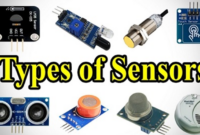How to Measure TRIAC using Multimeter – TRIAC or Triode for Alternating Current is an electronic component that belongs to the Thyristor family. One of triac’s capabilities that is different from thyristor in general is its ability to conduct electric current in both directions when triggered or often called bidirectional triode thyristor. The main function of TRIAC on an Electronics circuit is as a Controller or Switching.
Read also Definition of Active Electronic Components and Passive Electronic Components
How to Test or Measure TRIAC using a Digital Multimeter
To find out if a TRIAC can function properly, we can use a Multimeter to test it. The following are steps to measure or test a TRIAC (Triode for Alternating Current) whether it can function properly using a Multimeter.

Measuring TRIAC with a Digital Multimeter
Here’s how to Test or Measure TRIAC using a Digital Multimeter.
Step 1:
- Set the position of the Digital Multimeter switch to Diode Measurement,
- Connect the Red Probe (+) Multimeter to the MT1 TRIAC terminal.
- Connect the Black Probe (-) Multimeter to MT2 TRIAC.
- The Multimeter screen will show the sign “OL” or “over load”. This indicates that TRIAC is in good condition.
Step 2:
- Position of Digital Multimeter switch still on Diode Measurement
- Connect the Black Probe (-) Multimeter to the MT1 TRIAC terminal.
- Connect the Red Probe (+) Multimeter to MT2 TRIAC.
- The Multimeter screen will show the sign “OL” or “over load”. This indicates that TRIAC is in good condition.
- Move the Red Probe (+) Multimeter to Terminal Gate.
- The Multimeter screen will show a value of about 0.127V. This indicates that TRIAC is in good condition.



